Postcards in aviation advertising – big ideas from this week’s episode:
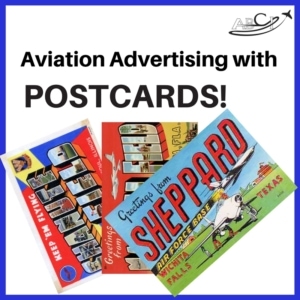
- Postcards are an incredibly popular and traditional form of aviation advertising.
- They still work!
- They require a complete campaign to be most effective.
If you have any questions, comments, or anything else that you’d like to add to this, you can add them on our blog, that’s AviationBusinessConsultants.com or in social media you can use the hashtag #avgeekmarketing, the way will find it, hopefully, and respond to it.
We very much appreciate and try to respond to every comment or question!
Transcript – Episode 68 – Seven Ways to Use Postcards in Aviation Advertising
[MUSIC]Announcer: You’re listening to aviation marketing Hangar Flying, the community for the best sales and marketing professionals in the aviation industry. You can’t learn to fly just from a book. You learn from other pilots who know the tools, the skills, and the territory. Your hosts, John and Paula Williams, are your sales and marketing test pilots.
They take the risks for you and share strategies, relevant examples, hacks, and how-tos. Be sure to subscribe on iTunes so you won’t miss a thing.[SOUND]
Paula Williams: Welcome to aviation marketing Hangar Flying episode number 68, 7 Ways To Advertise With Postcards. I’m Paula Williams,
John Williams: I’m John Williams.
Paula Williams: And we are ABCI, and ABCI’s mission is.
John Williams: To help all you folks out there sell more products and services in the aviation world.
Paula Williams: Absolutely, so if you have any questions, comments, or anything else that you’d like to add to this, you can add them on our blog, that’s AviationBusinessConsultants.com or in social media you can use the hashtag #avgeekmarketing, the way will find it, hopefully, and respond to it.
So yeah, we always report to your question comments and everything else that is really where the best ideas come from is from questions that are asked by listeners, and clients, and everybody else, right?
John Williams: Yep.
Paula Williams: Okay, so we will do our best to reply to every tweet, comment, or anything else.
So.
John Williams: [LAUGH] So.
Paula Williams: Postcards are incredibly popular and traditional in aviation marketing. Now a lot of people have kind of foregone the whole snail mail idea in favor of all the shiny electronic toys these days. And we think that’s a mistake, right?
John Williams: Absolutely.
Paula Williams: Right.
John Williams: There are some things and reasons that postcards in aviation advertising work when nothing else does.
Paula Williams: Exactly, so there’s a lot of advantages to the shiny digital toys and you know far be it from us to be dissing them in any way but we do really think a combination is what works best because there are pros and cons to any advertising medium postcards being among them, right?
Okay, but they still do work and in fact, you have bought things based on postcards in aviation advertising. Or at least in a relationship that was initiated with postcards, right?
John Williams: You, meaning me?
Paula Williams: Yeah, you, John Williams.
John Williams: [LAUGH].
Paula Williams: Mr. Aviation Consumer, if you put your consumer hat on, as opposed to your marketing hat.
John Williams: Actually, yes, and not just small stuff.
John Williams: I guess in 2007 late, I was considering buying an airplane. And I believe in January, I got a first postcard from somebody that was selling an airplane. [LAUGH] And one thing led to another, and postcard disappeared. And then-
Paula Williams: You forgot about it, right?
John Williams: Yeah, I forgot about it.
Paula Williams: Okay.
John Williams: Then another one arrived at the same place and then I thought yeah, I was gonna do that and I don’t know what happened but I didn’t do anything. If this happened first, I think call away up until September, no August.
September I actually bought the airplane.
Paula Williams: Wow, so it took from.
John Williams: Almost a year.
Paula Williams: Almost a year.
John Williams: When I wanted to buy it.
Paula Williams: Yeah, between the first contact and the time that you actually transacted business with us.
John Williams: Yeah, just life got in the way.
Paula Williams: Yeah.
John Williams: That’s just the way it is.
Paula Williams: And that’s another things weird thing about aviation is that we do have a really long sales cycle and people do have a lot of things going. People who are in aviation tend to have very complex business cycles, very complex lives, a lot of things going on.
So you really can’t expect for any one given marketing activity to transact sales on the first time. These are some statistics that we found. 1% of sales are made on the first contact. 2% of sales are made on the second contact. 5% of sales are made on the third contact.
12% of sales are made on the fourth. And 80% percent of sales are made on the fifth contact or above. This is actually not as bad as some the statistics that I have seen. And some of the statistics that I have done for myself when doing analysis of sales processes, I would say that this is incredibly optimistic.
John Williams: Yes.
Paula Williams: [LAUGH] In aviation we have a very different business cycle than the rest of the world does. It’s much longer and more complex.
John Williams: As a matter of fact, I think I’ve seen somewhere in aviation where 80% of sales are made on a 12 and subsequent contact.
Paula Williams: Absolutely, and in your case it took 11 contacts that we know of.
John Williams: Yeah, right.
Paula Williams: If we’d been keeping track, it would probably be more than that. So I would say you know, never never never never never give up until they buy or until they die right?
John Williams: Exactly.
Paula Williams: Okay, to quote Winston Churchill right, never never never never never give up.
John Williams: Exactly.
Paula Williams: Okay. And the other thing about postcards is that, the open rates for email have been dropping pretty abysmally in the last year or two, because everybody’s doing email. Fewer people are doing direct mail than they were a year ago, which is great for us.
Because you wanna be doing what not everybody else is doing, right?
John Williams: Yes, just like in the magazines and the Money Magazine and one of these other ones. By the time it makes it to the magazine you’re too late.
Paula Williams: Right, that’s true. So what everybody is doing you should go the other way, and this really is a great reason for using direct mail and postcards because people’s mailboxes are kinda emptying out.
We probably get, I would say, a third less mail than we did a year or two ago.
John Williams: Email or mail?
Paula Williams: Mail, mail.
John Williams: Snail mail.
Paula Williams: Snail mail. Mail on the mail box.
John Williams: Yep.
Paula Williams: Yeah, and so any piece of mail, any given piece of mail is likely to at least be looked at before it gets thrown out, right?
Even if it’s obvious spam. [LAUGH]
John Williams: Right. [LAUGH]
Paula Williams: Physical spam. Okay, so nothing defies gravity, right?
John Williams: [LAUGH]
Paula Williams: And every marketing process has to follow the rules of gravity and that’s basically phase one. Aviation Marketing or, you know, basically prospecting and advertising. Phase two, building credibility and closing sales, and phase three, referrals, resales, and recaptures, right?
And testimonials. So you really need to know where in the process does this postcard fit? It needs to be part of a campaign, right? And part of a marketing system.
John Williams: Absolutely, Anything you do in marketing needs to be part of an integrated plan. Otherwise you are spending more than you need to.
Paula Williams: Right.
John Williams: With fewer results.
Paula Williams: Right. We get a lot of postcards that seem to be kind of pointless, or at least, the point is buried or unlikely. So you got an airplane saying, you know, advertising, are you gonna.
John Williams: Saying airplane [LAUGH].
Paula Williams: Yeah. Get an airplane, advertise on a postcard for sale.
John Williams: What are you talking about?
Paula Williams: [LAUGH] Let’s try that again. You got a postcard advertising an airplane for sale but there is nothing to do with this postcard, unless you happen to be in the market for this particular airplane at this particular time. And if it doesn’t fit, and what are the chances that it would, that this particular airplane is exactly what we’re looking for.
And we happen to have the money ready to write aa check for this airplane. Chances are that postcard is not going to get very good response. But if it is something more along the lines of a postcard advertising a buyer’s guide to aircraft in 2017, that’s something that would be a lot more likely that we would download, even if we don’t happen to be in the market for that particular airplane at this particular time.
And then we’ve still become a really good contact for that airplane broker, right?
John Williams: Of course.
Paula Williams: Okay, so let’s talk about seven ways to advertise with postcards that actually do make sense. One would be prospecting for new leads. And we just gave a pretty good example of that.
There’s a good way and a bad way of doing that. One would be saying here’s a product I have for sale, that’s good. But better would be to offer some kind of a lead magnet. Something that’s a low cost, low risk on both sides so that you capture those people that are not ready yet.
Which is the vast majority of the people receiving your postcard, right?
John Williams: Yes.
Paula Williams: Right, so lead magnets could include like a free consultation, or a tip sheet, or a buyers guide, or any number of things. We have a actually a downloadable tip sheet that includes 17 ideas for lead magnets.
So if you’re looking for inspiration, that’s a good one to download. If you’re looking for a way to make your post cards more effective, right?
John Williams: Mm-hm.
Paula Williams: Okay, You could be market testing a new product or service. So you want to know how many people would be interested in something with these characteristics.
We’ve seen postcards that do that. And these are all phase one, all of these first three. So, prospecting, offering a lead magnet, market testing a new product or service. Then in phase two, building credibility in closing, you’ve got a couple more. Conducting a survey. So let’s say you have somebody on your list for a while, you want to contact them again because once again, you have to make those 10-20 contacts before the sale is made.
What’s another reason that you could contact them without driving them crazy or making the offer again and again, and being pushy about sales. And you need to be, what’s the word, subtle, because you don’t want to be in their face.
John Williams: You want it to be something like, I can do that.
Only takes a couple of minutes.
Paula Williams: So you could conduct a survey of aviation businesses that have this specific issue and publish the results after the fact. That’s a good way to keep in touch with people who are in your pipeline, but not ready to buy yet. Keep them educated, position you as a thought leader, establish your credibility because you care about the answers.
And also give you some good information that you could use in marketing materials. Another way to do this, and you don’t wanna do this too often for the reason you just mentioned, is creating urgency. So providing some kind of a limited time offer. Saying, if you buy between now and the end of the month, we know the price is gonna be going up for this particular item or this regulation is going to go into affect so we can only sell these through the end of the month.
Any number of things that could create some kind of deadline or urgency, right?
John Williams: Mm-hm.
Paula Williams: Okay, so that’s phase two. How can you use postcards in phase three?
John Williams: Carefully. [LAUGH]
Paula Williams: Carefully.
John Williams: You request referrals of course.
Paula Williams: Exactly, so after someone has purchased from you, you can send them a postcard three months after the fact, or six months after the fact, something like that.
Asking them for referrals, saying who else could use our product or service. I think those are, especially if you give them a really easy way to respond to that. Those are always well-received, right?
John Williams: And they need to be, again very gentle, subtle.
Paula Williams: Mm-hm.
John Williams: Not too subtle.
But enough so that they don’t mind.
Paula Williams: Yeah. We’ve seen some really humorous ones and really fun ones. And this is a really great place to use humor and fun. To kind of lighten this up, make it more fun, make them more likely to cooperate with you. And the last one, this is one that every Jiffy Lube on the planet does, but not very many aircraft service places we’ve seen, MRO organizations and things like that have done.
And I think this is a really big missed opportunity. As a reminder, you brought your aircraft in for an annual inspection 10 months ago, can we schedule you in? We’re holding a spot for you. And here are some incentives to book your next service early or get this on the schedule so that we’re ready for you and we have some things that we could do that maybe addition, do a detail in other things that while you’re in here let’s make it worth you time.
All right?
John Williams: Of course.
Paula Williams: Okay, so seven ways to advertise with post cards we’re covering the whole spectrum of phase one, phase two, phase three.
John Williams: Gonna cover it all.
Paula Williams: [LAUGH] But once again everyone of these postcards is part of a system, right?
John Williams: Well, these opportunities for postcards, yes.
It needs to be part of an integrated marketing plan approach.
Paula Williams: We’re assuming you’ve got the infrastructure to handle all this so that when you’re doing a prospecting postcard, people respond to that. You know exactly how many people responded to that postcard. When you’re doing your market testing, you’ve got a survey set up and tested, and it’s ready to go.
If you’re doing a program to create urgency, you really have thought it through and have the details of that campaign thought through. So when we talk about campaigns, of course, back to the basics of that there are three elements of any successful campaign. So every time you send a post card, you wanna think about who’s the list for this?
So for your phase one campaign that’s going to be a very targeted list of prospective customers, right?
John Williams: Yes.
Paula Williams: For your phase two campaigns that’s going to be your current pipeline of people who are not ready to buy yet for one reason or another, right?
John Williams: And the presentation is those people that you want to sell to.
Paula Williams: Let’s stick to the list for a minute. Sticking to the list for phase three, the list for phase three would be your current or former customers, right?
John Williams: Okay.
Paula Williams: Okay, and then the offer, that really depends. That’s one of those seven things that we just talked about.
And then the presentation, of course, would be a postcard, right?
John Williams: Probably with something like a QR code on it.
Paula Williams: Do you like QR codes, just out of curiosity?
John Williams: Sometimes, it depends.
Paula Williams: Okay, there’s some pretty dramatic debate in marketing circles about whether QR codes are worth it or not.
I think you should have PURLs, personal URLs, or at least a specific URL as your call to action for a particular post card. Or, there are phone systems that where you can use a different number for each postcard.
John Williams: Yeah, but the thing is, nowadays everybody’s got a smartphone that’s got the ability to snap that QR code.
And if you’ve programmed it right, you go right to the point where you can see what you wanna see. And if you wanna see more, you know how to go push a button to go more.
Paula Williams: Sure.
John Williams: And if you don’t you’re done.
Paula Williams: Okay.
John Williams: And it seems to me like that is just a wasted opportunity if you don’t use one.
Paula Williams: Okay. Exactly and you can have more then one way for people to get back to you. You know, phone call for people who like the phone, email, a QR code or a URL. You know how ever, how ever works for you, right?
John Williams: You know what I mean?
If I’m the recipient of a postcard, I would much prefer to snap the QR code than talks somebody if I’m not ready. And if I snap a QR code then I’m gonna at least get the information.
Paula Williams: Right, absolutely correct. All right, so that’s the list, the offer, and the presentation.
You need to make sure that you check those off and a nice way to do that is we have a tip sheet that includes a checklist of things you should consider for a postcard campaign. Every postcard campaign should include a great list, a great offer, and a great presentation.
John Williams: Yes.
 Paula Williams: So if you go to ABCI1.com/PostcardTipSheet, you’ll get that tip sheet and you can download it there, or you could just go to ADCI1.com, click on the link for tip sheets and you’ll see that one there. So it’s really easy to download and get our quick little check list.
Paula Williams: So if you go to ABCI1.com/PostcardTipSheet, you’ll get that tip sheet and you can download it there, or you could just go to ADCI1.com, click on the link for tip sheets and you’ll see that one there. So it’s really easy to download and get our quick little check list.
So before you ever send a postcard ever again, you wanna make sure that you do that. Cuz it’s got some great tips about headlines and response codes and other kinds if things that will really help you make those postcards much more effective, right?
John Williams: Yes,they will.
Paula Williams: Okay, so go sell more stuff.
John Williams: Yeah, America needs the business.
Paula Williams: Absolutely, now more than ever, right?
John Williams: [LAUGH] Whatever.
Paula Williams: And subscribe to our podcast on iTunes Stitcher or Google Play, and do leave us a rating, and we’ll see you next week.
John Williams: Have a good day.[SOUND]
Announcer: Thanks for joining us for aviation marketing Hangar Flying, the best place to learn what really works in sales and marketing in the aviation industry.
Remember to subscribe on iTunes and leave a rating.
[MUSIC]
For more about Aviation Advertising:
How to Get Testimonials for Aviation Advertising!
What’s the best Aviation Advertising Media?
“Aviation Advertising – Don’t Abandon Tradition, Build On It!
Buying Advertising for Aviation Products and Services
Seven Ways to Use Postcards in Aviation Advertising
How to Get Testimonials for Aviation Advertising!
What’s the best Aviation Advertising Media?
Aviation Advertising – Don’t Abandon Tradition, Build On It!
Buying Advertising for Aviation Products and Services
Advertising & Prospecting Basics
Brand Advertising versus Direct Response Advertising
Aviation Advertising – Create a Checklist to Help Your Prospects
Presenting Your Offer – AKA – Your Advertisement
Free Webinar – Convincing Prospects and Customers with Visual Data in Aviation Advertising
Podcast: Play in new window | Download
Subscribe: Google Podcasts | Spotify | Amazon Music | RSS


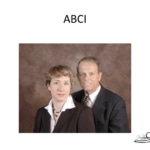
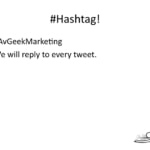

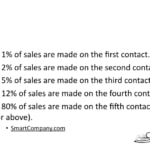


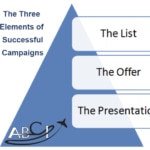
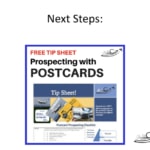
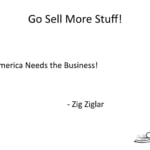
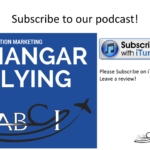





[…] by one [INAUDIBLE]. And one week hold on the outbound leg until they do something an email or a postcard or whatever. And then, you turn around and come back down, you do […]
[…] Seven Ways to Use Postcards in Aviation Advertising […]
[…] Seven Ways to Use Postcards in Aviation Advertising […]
[…] Seven Ways to Use Postcards in Aviation Advertising […]
[…] larger corporations – things like great web sites, social media marketing, email marketing, targeted postcards, and trade show […]